What Is DNS (Domain Name System)? :Most Thing You Need to Know
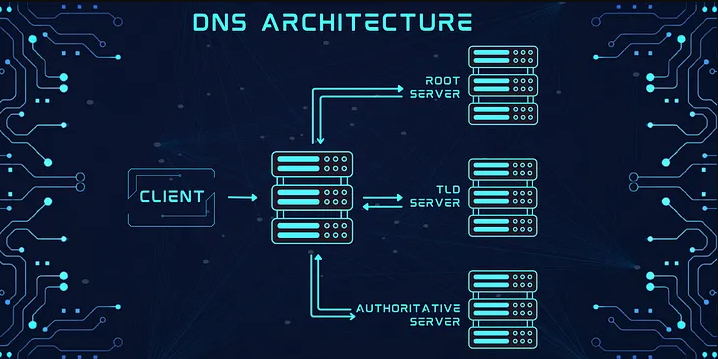
Ever wondered what happens behind the scenes when you type a web address into your browser? The answer lies in the DNS, the digital mastermind that translates user-friendly domain names into numerical IP addresses that computers understand. Without the Domain Name System, navigating the internet would be a daunting task, filled with cryptic numeric codes instead of easy-to-remember names. This essential system ensures that every click and keystroke leads you seamlessly to your desired destination. The DNS is not just a convenience; it’s the backbone of our digital world, orchestrating the web’s vast information network with precision and efficiency. Discover how this unseen maestro keeps our online experiences smooth and interconnected.
Table of Contents
What is a DNS?

The DNS (Domain Name System) is a hierarchical and decentralized naming system crucial to the internet’s functionality. It translates human-readable domain names, like www.example.com, into numerical IP addresses required for locating and identifying computer services and devices. Without DNS, navigating the web would be an arduous task, relying on remembering complex strings of numbers instead of simple, memorable names. This system ensures that users can easily access websites, send emails, and perform myriad online activities by seamlessly bridging the gap between human-friendly domain names and the underlying IP addresses that computers use to communicate.
What is a DNS Server?
A DNS server is a critical infrastructure element that translates domain names into IP addresses, facilitating seamless communication on the internet. When a user enters a web address, the DNS server processes this request, querying its database to match the domain name with the corresponding numerical IP address. This translation is essential for routing data to the correct destination, enabling browsers to load websites, and allowing email servers to direct messages accurately. Without DNS servers, the internet would be an unintelligible maze of numbers, making navigation and online interactions exceedingly complex.
How Does DNS Work?
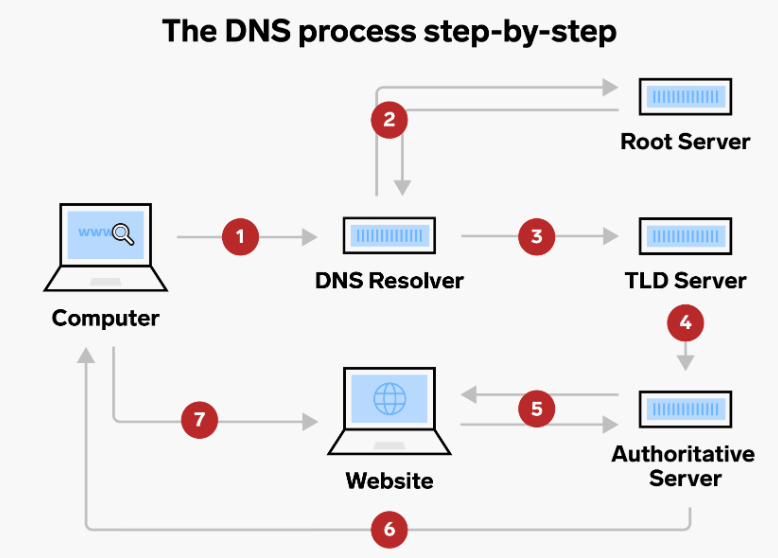
- User Enters Domain Name:
- The user types a domain name (e.g., www.example.com) into their web browser’s address bar and presses Enter.
- DNS Query Initiation:
- The browser checks its own cache to see if it has recently resolved the domain name. If not, it sends a DNS query to the local DNS resolver.
- Cache Check:
- The local DNS resolver, often provided by the Internet Service Provider (ISP), first checks its cache to see if it has a recent record of the domain’s IP address.
- Root Server Query:
- If the IP address is not in the resolver’s cache, the resolver sends a query to one of the 13 root DNS servers. These root servers are the highest level in the DNS hierarchy and contain information about TLD servers.
- TLD Server Query:
- The root DNS server responds with the address of the appropriate top-level domain (TLD) server (e.g., for .com, .org). The resolver then queries this TLD server.
- Authoritative Server Query:
- The TLD server responds with the address of the authoritative DNS server that holds the DNS records for the specific domain (e.g., example.com). The resolver then sends a query to this authoritative DNS server.
- IP Address Retrieval:
- The authoritative DNS server looks up its records and returns the corresponding IP address (e.g., 192.0.2.1) for the requested domain to the resolver.
- Response to Resolver:
- The DNS resolver caches this IP address for future queries and sends the IP address back to the user’s web browser.
- Webpage Loading:
- The browser receives the IP address and uses it to send a request to the web server hosting the website at that IP address. This request includes fetching the webpage’s HTML, images, scripts, and other resources.
- Display to User:
- The web server responds to the browser’s request by sending the requested resources, which the browser then assembles and displays as the intended webpage for the user.
Authoritative DNS Servers vs. Recursive DNS Servers: What’s the Difference?
| Feature | Authoritative DNS Servers | Recursive DNS Servers |
| Function | Provides the definitive answer for domain name queries. | Handles client queries by resolving domain names through a series of lookups. |
| Data Storage | Stores authoritative DNS records such as A (address), MX (mail exchange), and CNAME (canonical name) records for the domains it manages. | Does not store domain-specific records but caches DNS responses from queries to improve efficiency and reduce lookup times. |
| Query Handling | Responds directly to queries about domains for which it holds authoritative records. If it is queried about a domain not in its zone, it will not provide an answer. | Relays queries from clients to other DNS servers, traversing the DNS hierarchy (root servers, TLD servers, authoritative servers) to resolve the domain name. |
| Responsibility | Maintains and serves DNS information for specific domains, ensuring that clients receive accurate responses about those domains. | Resolves domain names for clients by conducting a series of queries to find the IP address, and caches the results to speed up future queries. |
| Examples | Domain registrars’ DNS servers (e.g., GoDaddy, Namecheap) or web hosting services (e.g., Bluehost) that manage specific domain zones. | ISP-provided DNS servers (e.g., Comcast, Verizon) or public DNS services like Google DNS (8.8.8.8), Cloudflare DNS (1.1.1.1), and OpenDNS. |
| Cache | Typically does not cache query results; instead, it provides the current authoritative records for its domains. | Caches DNS query results to reduce the need for repeated lookups and to minimize the load on upstream DNS servers. Cached results can be stored for a time specified by the Time-To-Live (TTL) value. |
| Usage | Used to directly resolve domain names into IP addresses for its specific domains. Essential for providing accurate and up-to-date information about domains it is responsible for. | Used by end-users to resolve domain names into IP addresses by performing iterative queries across the DNS hierarchy. Important for efficient and effective name resolution for users and organizations. |
| Query Type | Authoritative for the domain and its subdomains, meaning it has the final say in the resolution of queries for those domains. | Performs recursive queries on behalf of clients, ultimately providing the final resolved IP address and caching the result for future queries. |
1- Authoritative DNS Server
Definition
An Authoritative DNS Server is responsible for maintaining and serving DNS records for specific domains. It holds the final and authoritative answers for domain queries, meaning it has the authoritative data for the domain names it manages.
Primary Functions
- DNS Record Storage: Stores DNS records such as A (address) records, MX (mail exchange) records, CNAME (canonical name) records, and TXT (text) records. These records provide essential information about the domain, including its associated IP address, mail servers, and other configuration details.
- Direct Response: Provides direct responses to DNS queries about domains for which it is authoritative. When a query for a domain is received, the authoritative server responds with the information it holds, without needing to query other servers.
- Zone Management: Manages DNS zones, which are distinct sections of the DNS namespace. Each zone is a portion of the DNS hierarchy and contains the DNS records for its specific domains and subdomains.
Types of Records
- A Record: Maps a domain name to an IPv4 address.
- AAAA Record: Maps a domain name to an IPv6 address.
- MX Record: Specifies mail servers for the domain.
- CNAME Record: Provides an alias for a domain name.
- NS Record: Indicates the DNS servers authoritative for the domain.
- TXT Record: Holds text information, often used for verification and security purposes.
Examples
- Domain Registrars: Companies like GoDaddy or Namecheap that manage the DNS records for the domains registered through them.
- Web Hosting Providers: Services like Bluehost or HostGator that provide DNS management for their hosted domains.
Role in DNS Resolution
- Query Handling: When a DNS resolver queries the authoritative server for a domain, the server responds with the DNS records it holds.
- DNS Updates: The authoritative server updates its records as changes occur, ensuring that the latest information is available for queries.
- Domain Delegation: Authoritative servers can delegate authority for subdomains to other DNS servers, allowing for hierarchical management of domain information.
Importance
Stability: Ensures that domain name resolution remains consistent and dependable, critical for maintaining online services and communication.
Accuracy: Provides accurate and up-to-date DNS records, ensuring reliable resolution of domain names.
Security: Plays a vital role in DNS security, including implementing DNSSEC (DNS Security Extensions) to protect against certain types of attacks.
2- Recursive DNS Server
Definition
A Recursive DNS Server is responsible for resolving domain name queries by performing the necessary lookups to obtain the IP addresses associated with domain names. Unlike authoritative servers, recursive servers do not store domain-specific data but instead query multiple servers to find the answer.
Primary Functions
- Query Resolution: Receives DNS queries from client devices and performs the process of resolving these queries by querying other DNS servers if needed.
- Cache Management: Caches DNS query results to improve efficiency and speed for future queries. This caching reduces the load on upstream DNS servers and decreases query resolution times.
- Recursive Lookup: Conducts recursive lookups, where the server queries multiple DNS servers, including root, TLD (Top-Level Domain), and authoritative servers, to resolve a domain name fully.
Process of Resolution
- Query Reception: The recursive server receives a DNS query from a client device, typically for a domain name that needs to be resolved into an IP address.
- Cache Check: The server first checks its cache to see if it already has a recent and valid response for the requested domain. If a cached record is found, it is returned to the client.
- Root Server Query: If the record is not in the cache, the recursive server queries a root DNS server to find out which TLD server is responsible for the domain.
- TLD Server Query: The recursive server then queries the appropriate TLD server (e.g., .com, .org) to get the address of the authoritative DNS server for the domain.
- Authoritative Server Query: The recursive server queries the authoritative DNS server, which provides the final IP address for the domain.
- Response Delivery: The IP address is returned to the recursive server, which then caches the result and sends it back to the client.
Examples
- ISP-provided DNS Servers: DNS servers offered by Internet Service Providers, such as Comcast or Verizon, which handle queries for their customers.
- Public DNS Services: Publicly available recursive DNS services like Google Public DNS (8.8.8.8), Cloudflare DNS (1.1.1.1), and OpenDNS.
Role in DNS Infrastructure
- User Interaction: Acts as an intermediary between client devices and the DNS hierarchy, ensuring that domain names are resolved into IP addresses efficiently.
- Efficiency: Improves overall DNS query performance by caching previously resolved queries and reducing the number of requests sent to authoritative servers.
- Error Handling: Provides error messages if a domain cannot be resolved or if there are issues with the DNS query.
Importance
- Speed: Caching mechanisms enhance the speed of subsequent queries for the same domain, providing a quicker user experience.
- Reliability: Handles the complexity of DNS resolution, ensuring that users can access websites and online services without having to understand the underlying DNS structure.
- Resource Management: Reduces the load on authoritative DNS servers by handling recursive queries and caching results.
DNS Servers and IP Addresses
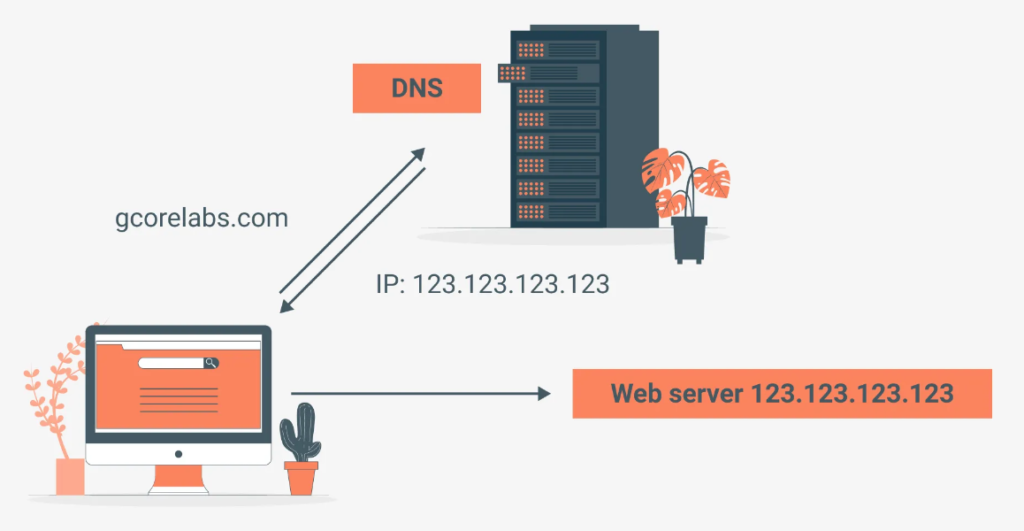
DNS servers play a crucial role in translating human-readable domain names into numerical IP addresses. When a user requests a website by its domain name, a DNS server resolves this query by providing the corresponding IP address, which is necessary for locating the website’s server on the internet. This translation process ensures that users can navigate the web seamlessly without needing to remember complex numerical addresses. DNS servers maintain and manage these mappings, using caching mechanisms to enhance efficiency and reduce query times. Thus, they bridge the gap between user-friendly domain names and the technical IP addresses required for digital communication.
DNS Server Not Responding? What Does That Mean?
- Server Outage: The DNS server might be down due to maintenance, unexpected failures, or crashes. This prevents it from handling domain queries, leading to resolution errors.
- Network Connectivity Issues: Problems with the network connection between your device and the DNS server can cause communication failures. This might be due to local network issues, ISP problems, or broader internet outages.
- Configuration Errors: Incorrect configurations on the DNS server, such as improper settings or outdated records, can disrupt its ability to resolve domain names accurately.
- Firewall Restrictions: Security measures like firewalls or antivirus software may block DNS queries, mistakenly treating them as threats and preventing proper communication.
- Server Overload: High traffic volumes or excessive query loads can overwhelm the DNS server, causing it to become unresponsive or slow to respond.
- DNS Cache Problems: Corrupted or outdated cache entries on the DNS server might result in incorrect responses or failures in resolving domain names.
Best DNS Servers
- Google Public DNS
- IP Addresses:
8.8.8.8and8.8.4.4 - Features: Known for high speed and reliability. Google Public DNS aims to enhance browsing speed and provide robust security against DNS-based attacks.
- IP Addresses:
- Cloudflare DNS
- IP Addresses:
1.1.1.1and1.0.0.1 - Features: Focuses on privacy and speed. Cloudflare DNS is designed to be the fastest DNS resolver and does not log user IP addresses, promoting greater privacy.
- IP Addresses:
- OpenDNS
- IP Addresses:
208.67.222.222and208.67.220.220 - Features: Offers customizable filtering and enhanced security features. OpenDNS provides additional protection against malicious websites and phishing.
- IP Addresses:
- Quad9 DNS
- IP Addresses:
9.9.9.9 - Features: Emphasizes security by blocking access to known malicious domains. Quad9 DNS helps protect users from malware and phishing attacks by leveraging threat intelligence.
- IP Addresses:
- Comodo Secure DNS
- IP Addresses:
8.26.56.26and8.20.247.20 - Features: Provides security-focused features, including malware protection and content filtering. Comodo Secure DNS aims to safeguard users from harmful websites and online threats.
- IP Addresses:
- DNS.Watch
- IP Addresses:
84.200.69.80and84.200.70.40 - Features: Offers privacy and neutrality. DNS.Watch is known for its commitment to user privacy and an ad-free browsing experience.
- IP Addresses:
Choosing the Right DNS Server
- Reliability: Choose servers known for consistent uptime and minimal disruptions.
- Speed: Opt for servers with low latency to ensure quicker domain resolution and faster browsing speeds.
- Privacy: Consider DNS servers that do not log personal data or browsing history for enhanced privacy.
- Security: Look for servers that offer additional protection against phishing, malware, and other online threats.
How to Perform a DNS Lookup
- Open Command Line: On Windows, use Command Prompt or PowerShell; on macOS or Linux, open Terminal.
- Execute
nslookupCommand:- To find an IP address for a domain, type
nslookup example.com. For instance,nslookup google.commight return142.250.190.78. - For a reverse lookup, use
nslookup 142.250.190.78. This may revealgoogle.com.
- To find an IP address for a domain, type
- Utilize
digCommand (macOS/Linux):- To resolve a domain, enter
dig example.com. For example,dig amazon.comwill provide details including the IP address. - For reverse lookups, type
dig -x 54.239.28.85. This could returnec2-54-239-28-85.compute-1.amazonaws.com.
- To resolve a domain, enter
- Use Online Tools: Websites like MXToolbox or WhatIsMyDNS allow easy DNS lookups. Entering
example.comor8.8.8.8will show the respective DNS records. - Browser Extensions: Install a DNS lookup extension like “DNS Lookup” for Chrome. Inputting
example.comwill quickly show the IP address.
Free vs. Paid DNS Servers: What is the Difference?
| Feature | Free DNS Servers | Paid DNS Servers |
| Cost | No cost; accessible without payment. Examples include Google Public DNS and Cloudflare DNS. | Requires a subscription or one-time fee. Examples include Cloudflare for Teams and OpenDNS Umbrella. |
| Performance | Generally adequate but may experience variability in speed and latency. Free DNS servers might be shared among many users, which can affect performance. | Often optimized for speed and reliability, with high-performance infrastructure and fewer users per server, leading to more consistent response times. |
| Security | Basic security features such as protection from common threats. Examples: Google Public DNS offers some protection against phishing. | Enhanced security measures, including advanced threat detection, DDoS protection, and malware blocking. For instance, paid DNS services often offer real-time threat intelligence and blocking of malicious domains. |
| Privacy | May log user data and browsing history; privacy policies can vary widely. Example: Some free DNS services might use data for advertising purposes. | Typically focused on user privacy with minimal or no data logging. Services like Cloudflare’s 1.1.1.1 emphasize privacy by not logging user IP addresses or browsing history. |
| Support | Often limited or community-based support. Users may need to rely on forums or documentation for assistance. | Professional, dedicated customer support is usually available, with quick response times and technical assistance. Paid services often include 24/7 support and personalized help. |
| Customization | Limited configuration options. Users can typically only modify basic settings like DNS records or caching. | Extensive customization options, including advanced configuration settings, traffic management, and customized filtering. Paid services offer tools to tailor DNS settings to specific needs. |
| Uptime | Generally reliable but can be affected by server outages or maintenance. Free services may experience downtime or slower response times during peak usage. | High reliability with guaranteed uptime through redundancy and failover systems. Paid DNS servers often come with Service Level Agreements (SLAs) ensuring high availability and consistent performance. |
| Features | Basic features such as DNS resolution and caching. Some free DNS servers provide additional services like basic content filtering. | Rich feature set including advanced content filtering, parental controls, DNS analytics, and geo-location-based resolution. Paid DNS services often offer comprehensive tools and features beyond basic DNS resolution. |
| Ads and Tracking | May include ads or tracking mechanisms. Some free DNS services may use ads or tracking for revenue generation. | Typically ad-free and free from tracking mechanisms. Paid DNS services prioritize a clean, unobtrusive experience without advertising or data collection. |
What is DNS Cache Poisoning?
DNS cache poisoning is a malicious attack that corrupts the DNS cache of a resolver by injecting false DNS records. This deception redirects users from legitimate websites to fraudulent ones, potentially compromising sensitive information. During an attack, the malicious actor manipulates the DNS resolver to store incorrect IP addresses for specific domain names. When users attempt to access a legitimate site, they are instead directed to an attacker-controlled site. This can result in data theft, phishing attacks, or malware infections. Protecting against DNS cache poisoning involves implementing security measures such as DNSSEC, which ensures the integrity of DNS data and helps prevent such attacks.
“Understanding DNS is crucial for navigating the digital world. It’s the backbone that translates human-friendly domain names into machine-friendly IP addresses.”
Conclusion
In conclusion, understanding the nuances of DNS is essential for navigating the complexities of modern internet infrastructure. From the basic function of translating domain names to IP addresses to the sophisticated mechanisms of security and performance optimization, DNS plays a pivotal role. Whether evaluating free versus paid DNS servers, performing lookups, or addressing issues like DNS cache poisoning, having a comprehensive grasp of DNS helps in making informed decisions. Prioritizing reliable, secure, and efficient DNS solutions ensures better browsing experiences and enhanced online safety. Embrace these insights to optimize your DNS configurations and protect your digital presence.
“Without DNS, the internet as we know it would not function. It’s the silent hero, ensuring our web requests reach the right destinations swiftly and securely.”
FAQs on DNS (Domain Name System)
- What is DNS and how does it work?
- DNS (Domain Name System) translates human-friendly domain names into machine-friendly IP addresses, allowing users to access websites using easy-to-remember names.
- Why is DNS important for the internet?
- DNS is essential because it simplifies the process of navigating the internet by converting domain names into IP addresses, enabling seamless connectivity.
- What are the main components of DNS?
- The main components of DNS include domain names, IP addresses, DNS servers, and DNS records, which work together to route internet traffic correctly.
- How do I perform a DNS lookup?
- A DNS lookup can be performed using command-line tools like
nslookupordig, or by using online DNS lookup tools to find the IP address of a domain.
- A DNS lookup can be performed using command-line tools like
- What is DNS cache poisoning?
- DNS cache poisoning is a malicious attack where incorrect DNS records are inserted into a DNS resolver’s cache, redirecting users to fraudulent websites.
- What is the difference between authoritative and recursive DNS servers?
- Authoritative DNS servers provide answers to queries about domains within their control, while recursive DNS servers resolve queries by consulting multiple authoritative servers.
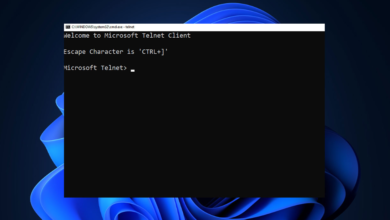

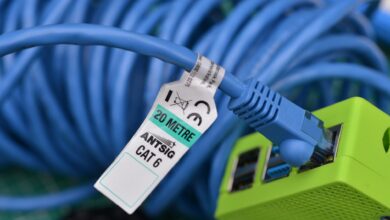


6 Comments